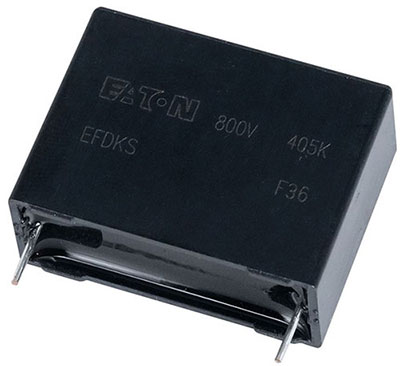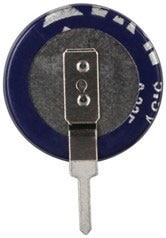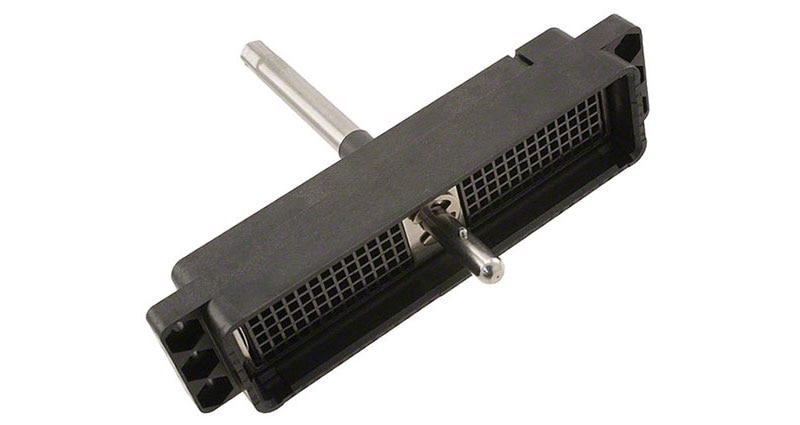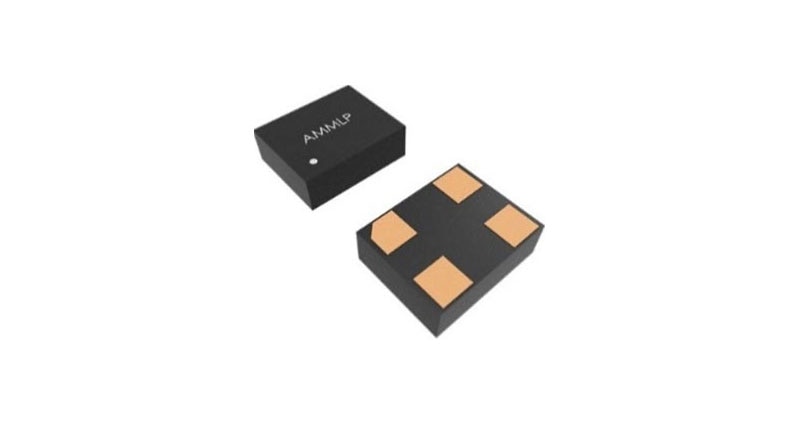How to Choose the Right Capacitors for HVAC Applications
Capacitors play a crucial role in the optimal functioning of HVAC (heating, ventilation, and air conditioning) systems, ensuring smooth and efficient operation. Product designers can significantly improve HVAC performance by understanding the role of these components, the different types in use, and common challenges that can lead to failures.
A review of key capacitors offered by the electronics division of Eaton, a more than century-old power management products company, can help illustrate how to match the right components to the application.
Motors, compressors, and fans rely on capacitors to enhance efficiency and reliability. Designers need to account for the often extreme environmental conditions that can lead to large, unplanned repair costs and customer dissatisfaction.
Foremost among challenges are the high heat and humidity for which HVAC systems are designed to provide relief. Many HVAC systems are installed on rooftops, where they are exposed to direct sunlight and surrounded by roofing material with high thermal absorption, which can create overheating during the summer.
The compressors and fans used to cool and dehumidify HVAC systems are subject to constant vibration from their rotating components. This causes mechanical stress that can loosen capacitors from mounting points, exacerbate wear and tear, and degrade internal dielectric layers. Power surges, often experienced during weather events, as well as voltage fluctuations in the electrical grid, can damage the integrity and performance of capacitors.
Early indicators of potential problems are inconsistent cooling, higher than normal energy bills, and unusual noises during HVAC startup and operation.
The role of capacitors in HVAC applications
As in other applications, capacitors in HVAC systems store and release electrical energy. Start capacitors provide the boost required to start motors, while run capacitors maintain smooth operation. When working optimally, they ensure that HVAC motors can operate without overloading or overheating.
Capacitors provide phase shift and energy storage functions essential in starting HVAC systems and balancing the energy flow. They are also instrumental in reducing energy losses and enhancing system efficiency, which are key factors in prolonging system lifespan and ensuring the most efficient use of power.
Modern capacitors for HVAC applications use specialized materials like metallized polypropylene to withstand thermal stress and provide self-healing properties to ensure they can continue to operate with minor faults caused by electrical arcing.
Capacitors use polypropylene film as the dielectric layer to provide stable energy storage. A thin layer of metal is applied to that film to form the electrodes and enable a compact form factor. Polypropylene film capacitors typically have a lower capacitance density. However, in high-performance applications, they offer significant advantages over electrolytic types, such as improved stability, voltage handling, lower losses, and longer lifetime.
Eaton’s HVAC capacitors
Eaton offers a range of capacitors designed to enhance the performance and reliability of HVAC systems. The company's range of DC Link, safety, AC filtering, and pulse film capacitors provide complementary roles in ensuring the reliability and performance of HVAC designs.
Constructed of metallized polypropylene film, Eaton’s range of medium-voltage, single-phase, all-film internally fused capacitors is suitable for various HVAC applications, offering versatility and stability and providing flexibility in system design. They can be utilized to filter out electrical noise and high-frequency interference, absorb voltage spikes to protect systems from transient events, and improve power factor correction.
Eaton’s EFDKx Series DC link film capacitors (Figure 1) minimize power loss by reducing harmonic distortion and ensuring a steady flow of power to motors and compressors. They maintain steady DC voltage levels, smooth out power fluctuations, and filter electrical noise.
 Figure 1: An EFDKx Series DC link film capacitor. (Image source: Eaton)
Figure 1: An EFDKx Series DC link film capacitor. (Image source: Eaton)
Low loss EFDKx capacitors can accommodate high ripple current without overheating. Encapsulated with epoxy resin in a plastic case with two or four-pin tinned copper wire terminals, these capacitors function as the intermediate stage between a rectifier (DC-DC converter) and an inverter (DC-AC).
Eaton’s EFX Series safety film capacitors are also constructed of metallized polypropylene film encapsulated with self-extinguishing resin. Also known as EMI suppression capacitors, these devices provide surge protection and insulation. They are automotive grade (THB Grade IIIB and AEC-Q200 qualified) with high reliability and are designed for harsh environment applications. Available in Class X1 and Class X2 interference suppression versions, they come in a wide variety of sizes, lead lengths, and terminal configurations.
Designers can also utilize Eaton’s EFPLS Series rapid charge and discharge pulse film capacitors. These are also THB Grade IIIB and AEC-Q200 qualified and provide high-performance energy storage designed for pulsing applications that require rapid bursts of power delivery.
Eaton’s EFACA Series AC filtering film capacitors are also THB Grade IIIB and AEC-Q200 qualified and provide power factor correction and harmonic filtering for power converter circuits. They can be utilized to reduce energy costs and improve power quality.
Eaton’s capacitors can be configured in various parallel/series combinations to meet specific application needs based on kilovolt-ampere reactive (kVAR) requirements, system voltage, and protection strategy.
Supercapacitors for critical functions
Eaton also offers several families of coin cell supercapacitors (Figure 2) that provide electrochemical energy storage in a compact and high-capacity form factor. These devices can store and release electrical energy quickly.
 Figure 2: An Eaton coin cell supercapacitor. (Image source: Eaton)
Figure 2: An Eaton coin cell supercapacitor. (Image source: Eaton)
Supercapacitors provide immediate backup power during short-term interruptions or voltage sags, with an ability to deliver quick bursts of energy to maintain system stability until power is restored or auxiliary power is activated. They also can provide peak power assistance during high-demand periods, reducing added strain on primary power sources. By smoothing out voltage fluctuations, supercapacitors help maintain consistent voltage levels within HVAC systems to protect sensitive electronic components and ensure reliable operation.
Eaton’s KR/KW Series and KVW Series supercapacitors are designed for maintenance-free operation and a lifetime of up to 20 years. They utilize electric double layer capacitor (EDLC) construction combined with proprietary materials and processes to provide high reliability, high power, and ultra-high capacitance energy storage.
The KR series is suited for compact, light-duty applications such as real-time clock backup. The KW series is designed for more demanding industrial and HVAC environments with extended temperature ranges to +85°C, while the KVW delivers robust backup power for light industrial and consumer applications in that extended temperature range.
Conclusion
Capacitors are crucial in HVAC systems, enhancing efficiency and reliability by providing essential electrical energy storage and release to optimize performance. Eaton offers a range of capacitors—including DC link capacitors, safety capacitors, and pulse film capacitors—designed to withstand harsh environmental conditions and improve system performance.

Have questions or comments? Continue the conversation on TechForum, DigiKey's online community and technical resource.
Visit TechForum










